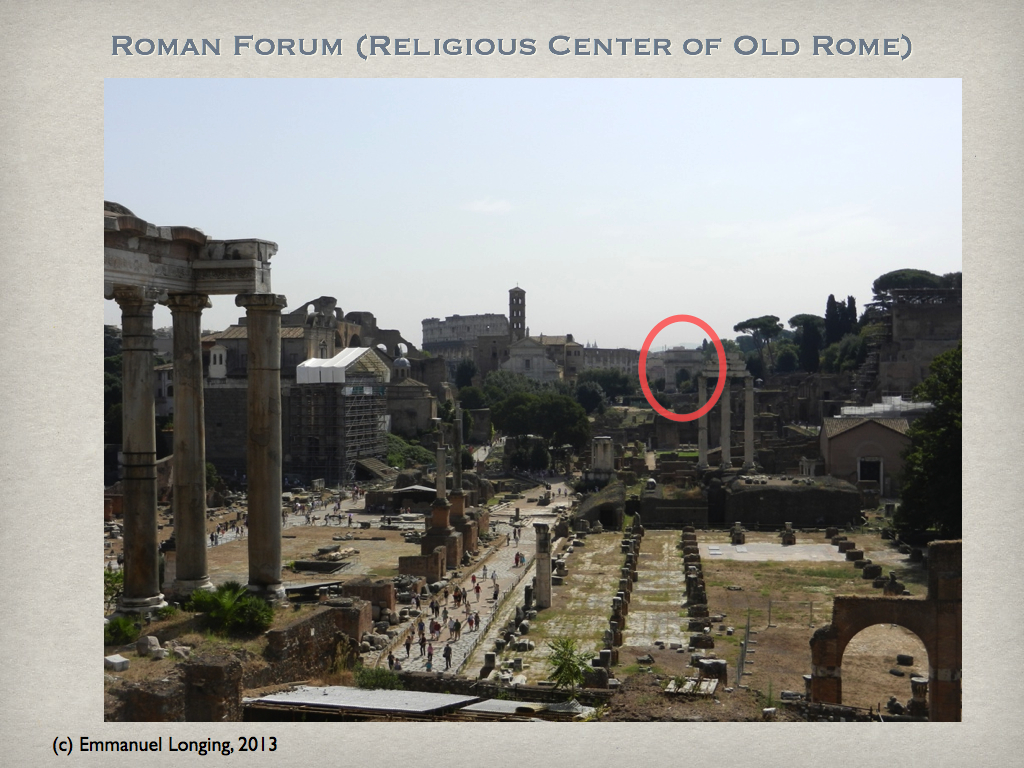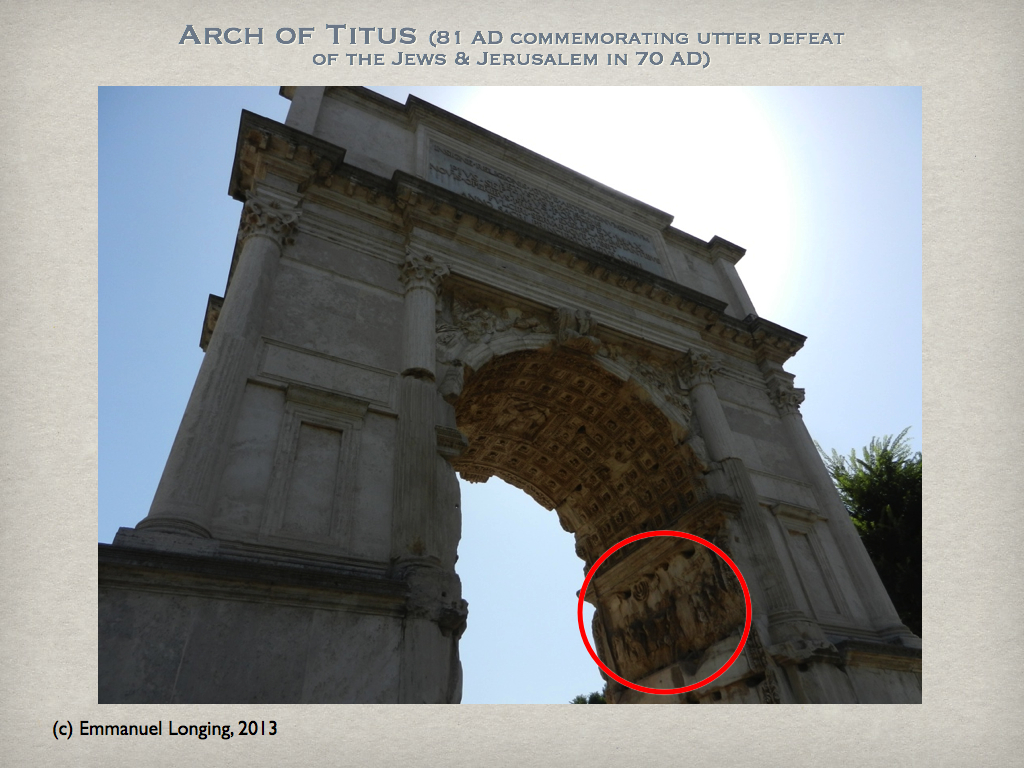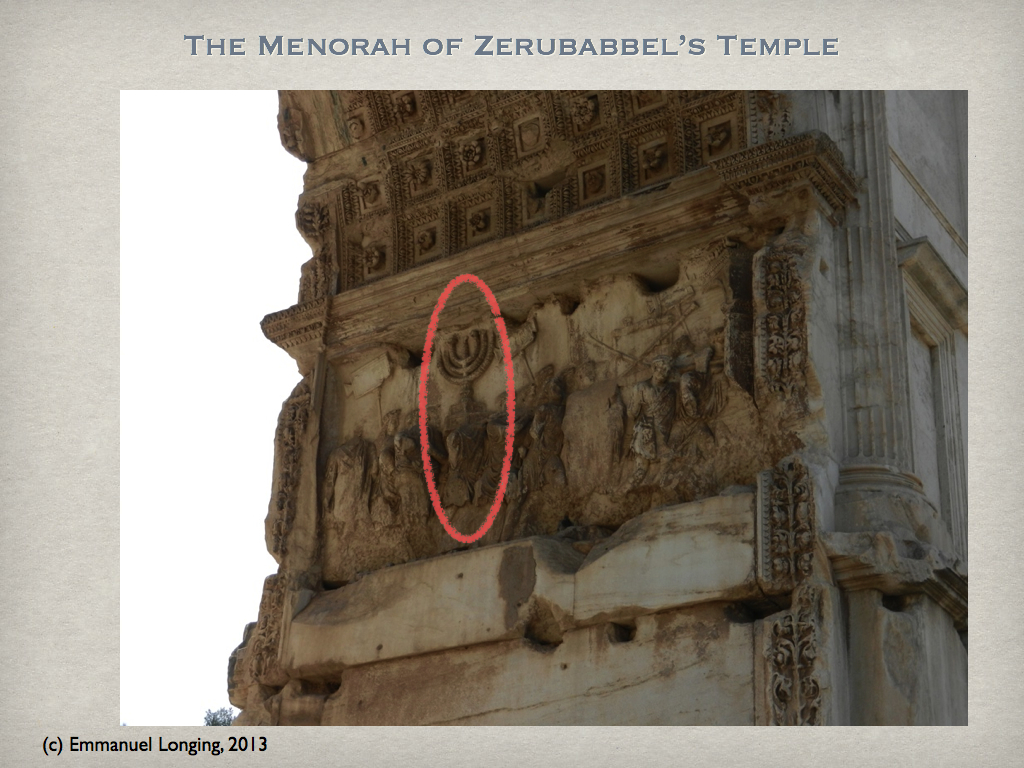After the time of Christ, ending in ca. 30 A.D., there were two Jewish rebellions against Roman rule. The first of these was crushed by a Roman general named Titus in 70 A.D. (with the famous mass death at Masada in 72 A.D.). The second and final destruction occurred as a consequence of yet another Jewish rebellion in the period around 135 A.D..
Today, it is possible to see the evidence of such Roman destruction in the remnants of Roman rule at the Forum in Rome. Shown below is the famous arch monument which was constructed to commemorate putting down the rebellion in Jerusalem and its associated looting and destruction.
Below is a view from the Capitoline Hill toward the Palatine Hill across the Forum of the many monuments of the Roman Empire. Shown by the red circle is the Arch of interest to us here. Below is a closeup view of the Arch of interest, with the red circle showing an area of particular interest:
Below is a closeup view of the Arch of interest, with the red circle showing an area of particular interest: Shown in the carving on the interior of the Arch is a representation of the treasures of the captivity from Jerusalem. Of particular note is the Menorah, the seven stemmed candlestick made of gold that provided the olive-oil fired lamp within the Temple.
Shown in the carving on the interior of the Arch is a representation of the treasures of the captivity from Jerusalem. Of particular note is the Menorah, the seven stemmed candlestick made of gold that provided the olive-oil fired lamp within the Temple. Also shown on this leg of the Arch are other notable ‘trophies’ of the Roman’s sacking of the Temple: the silver trumpets and table for the showbread. The other leg of the Arch, not shown here, depicts the victorious Roman General Titus, as deified, driving his chariot accompanied by Roman gods of victory (Victoria and Roma). It is interesting to note that the stone tablets of the 10 Commandments (which symbolized the Covenant) are not shown in the Arch and may have been previously lost during the Babylonian destruction of the 1st Temple along with the Ark of the Covenant. The present existence or location of the shown Menorah, trumpets, and table is unknown, but the subject of much speculation.
Also shown on this leg of the Arch are other notable ‘trophies’ of the Roman’s sacking of the Temple: the silver trumpets and table for the showbread. The other leg of the Arch, not shown here, depicts the victorious Roman General Titus, as deified, driving his chariot accompanied by Roman gods of victory (Victoria and Roma). It is interesting to note that the stone tablets of the 10 Commandments (which symbolized the Covenant) are not shown in the Arch and may have been previously lost during the Babylonian destruction of the 1st Temple along with the Ark of the Covenant. The present existence or location of the shown Menorah, trumpets, and table is unknown, but the subject of much speculation.
Since the destruction of the Temple and all of Jerusalem in A.D. 70 and again in A.D. 135, it has been impossible for the Jewish nation to again conduct the worship of YHWH at the Temple, or experience the presence of the glory of His Name, or to have sovereign control of the Land promised to Abraham (though since 1948 they have been a notable outpost nation in the Land, including most of Jerusalem, but not including the area of the Temple mount, which remains under Muslim control).
Let us go back in time to the origins of the Temple and the worship of YHWH on Mount Moriah.